Wearing Mask
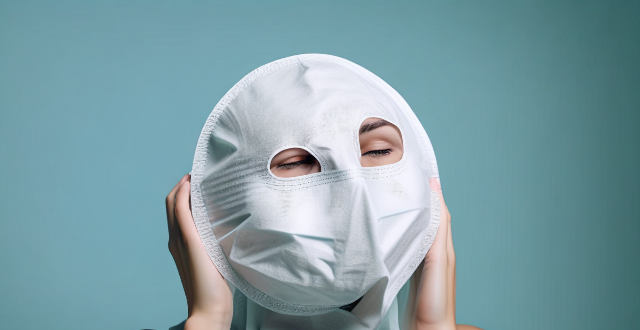
Can wearing a face mask for a long time cause breathing problems ?
Wearing a face mask for extended periods can cause breathing issues, especially if the mask is not fitted properly or worn incorrectly. There are various types of face masks, each with its own potential impact on breathing, including surgical masks, N95 respirators, and cloth masks. Prolonged use of face masks can lead to increased resistance, humidity, and reduced oxygen intake. To minimize potential breathing issues while wearing a face mask, it's important to ensure proper fit, choose breathable materials, take breaks, stay hydrated, and consult a healthcare professional if necessary. Overall, the benefits of source control and infection prevention should be balanced against any minor discomforts experienced.
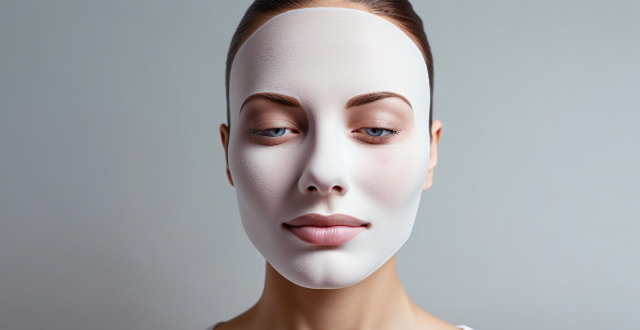
Are there any health risks associated with wearing a face mask for an extended period ?
Wearing a face mask for an extended period can have potential health risks such as skin irritation, difficulty in breathing, reduced oxygen intake, and psychological effects. However, these risks are generally minimal when compared to the benefits of wearing a mask in preventing the spread of infectious diseases. It is important to choose a mask that fits well and is made of breathable materials to minimize any potential health risks.

How does wearing a face mask affect oxygen levels in the body ?
Wearing a face mask is an essential practice during the COVID-19 pandemic to prevent the spread of the virus. However, some people have concerns about whether wearing a mask affects oxygen levels in the body. In this article, we will explore how wearing a face mask affects oxygen levels in the body and provide evidence to support our claims. There are two main ways in which wearing a face mask can affect oxygen levels: decreased airflow and increased carbon dioxide retention. However, studies have shown that wearing a face mask does not significantly reduce oxygen levels in healthy individuals who are not exercising heavily. In healthy individuals, wearing a face mask does not pose any significant risk of low oxygen levels. However, if someone has underlying respiratory conditions such as asthma or COPD, they may experience shortness of breath or other symptoms when wearing a face mask. To ensure adequate oxygen levels while wearing a face mask, one can follow these tips: choose the right type of mask, maintain good hydration, exercise regularly, avoid heavy exercise, and consult with healthcare professionals if necessary.

Can wearing a face mask cause skin irritation or acne ?
Wearing a face mask can cause skin irritation or acne due to friction, pressure, heat, moisture buildup, and bacterial growth. To prevent these issues, choose breathable materials, wash your face regularly with gentle cleansers, use oil-free skincare products, change your mask frequently, and consult a dermatologist if necessary.

Is it necessary to wear a face mask while exercising outdoors ?
The necessity of wearing a face mask while exercising outdoors depends on several factors, including the current health situation, personal preferences, and local guidelines. Key points to consider: - COVID-19 transmission risks: Aerosol transmission and proximity to others can increase the risk of infection. Wearing a mask can help reduce this risk. - Personal preferences: Comfort level and medical conditions should be considered when deciding whether to wear a mask while exercising. Consult with your healthcare provider if you have any concerns. - Local guidelines: Check your local government's guidelines for outdoor exercise during the pandemic and be aware of community standards regarding mask-wearing in public spaces. Overall, whether or not to wear a face mask while exercising outdoors is a personal decision that should take into account the current health situation, personal preferences, and local guidelines. By considering these factors, you can make an informed choice that balances your safety and comfort needs.
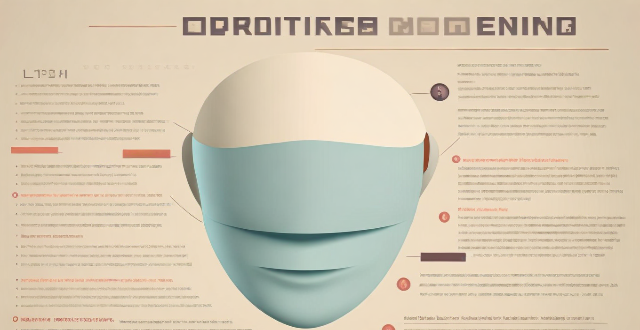
How often should you change your face mask ?
The article discusses the importance of changing face masks frequently to maintain their effectiveness in protecting against COVID-19. Factors such as the type of mask, level of exposure, personal hygiene, and symptoms of illness determine how often a mask should be changed. Disposable masks are designed for single use, cloth masks should be washed after each use or at least once a day, and N95 respirators have specific guidelines for replacement. It is crucial to follow proper guidelines to prevent the spread of infection and keep oneself and others safe.

Is there a standard guideline for wearing PPE during COVID-19 pandemic ?
The text provides a summary of the standard guidelines for wearing Personal Protective Equipment (PPE) during the COVID-19 pandemic. The guidelines are designed to protect healthcare workers, first responders, and other essential workers from getting infected with the virus. The levels of PPE required vary depending on the level of risk involved in different situations, ranging from low risk to high risk. The text also provides best practices for wearing PPE, including hand hygiene, putting on and removing PPE in the correct order, and proper disposal of PPE items.

How do I clean and store my reusable face mask ?
Face masks have become an essential part of our daily lives, especially during the COVID-19 pandemic. If you're using a reusable face mask, it's crucial to clean and store it properly to maintain its effectiveness and longevity. Here's a step-by-step guide on how to do so: ### Cleaning Your Reusable Face Mask Hand Washing * Fill a basin or sink with warm water: Make sure the water is not too hot to avoid damaging the fabric. * Add a mild detergent: Use a gentle soap or laundry detergent that is free from bleach and harsh chemicals. * Soak the mask: Let the mask soak in the solution for at least 30 minutes. * Gently scrub: Use your hands or a soft brush to gently scrub the mask, paying special attention to the areas around the nose clip and ear loops. * Rinse thoroughly: Rinse the mask under running water until all soap residue is removed. * Lay flat to dry: Place the mask on a clean towel or hang it to air dry completely before using it again. Machine Washing * Place the mask in a mesh laundry bag: This will protect the mask from getting damaged in the washing machine. * Select a delicate cycle: Use cold or warm water and set your washing machine to a gentle cycle. * Use mild detergent: Choose a detergent that is free from bleach and harsh chemicals. * Dry the mask: After washing, either lay the mask flat to air dry or tumble dry on low heat. ### Storing Your Reusable Face Mask Proper Storage Techniques * Keep it clean and dry: Ensure that your mask is completely dry before storing it to prevent mold growth. * Store in a breathable container: Use a paper bag or a breathable fabric pouch to store your mask. Avoid using plastic bags as they can trap moisture. * Avoid direct sunlight: Direct sunlight can degrade the fabric over time, so store your mask in a cool, shaded area. * Separate dirty and clean masks: Keep your clean masks separate from used ones to avoid cross-contamination. When to Replace Your Mask Visible damage or wear: If your mask has holes, torn seams, or is significantly faded, it's time to replace it. Loss of shape or fit: If the mask no longer fits snugly against your face or if the nose strip is no longer effective, consider replacing it. Reduced effectiveness: If you notice a decrease in filtration efficiency or breathability, it may be time for a new mask.
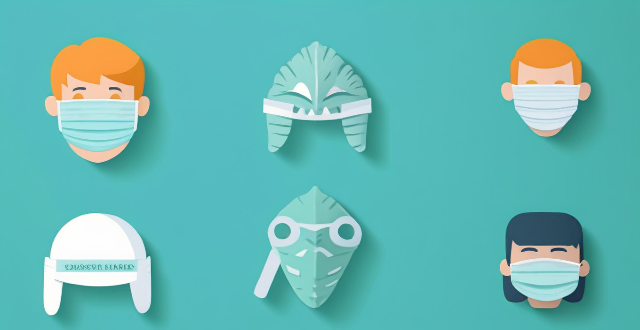
Is it safe to reuse disposable face masks after being out in public ?
The safety of reusing disposable face masks depends on several factors, such as the type of mask, how long you've been wearing it, and whether or not you've touched the outside of the mask. The CDC recommends replacing your disposable face mask as soon as it becomes moist or dirty. While it may be tempting to reuse disposable face masks to conserve resources, doing so could compromise their effectiveness. It is generally recommended to follow the guidelines provided by health organizations and experts and prioritize your health and safety by using clean and effective personal protective equipment.

What are the benefits of using a face mask regularly ?
The text provides a summary of the benefits of using a face mask regularly, including improved skin health, anti-aging benefits, acne prevention and treatment, and relaxation and self-care. The improved skin health section discusses the benefits of moisturization, cleansing, nutrient infusion, and brightening effects. The anti-aging benefits section highlights boosting collagen production, fighting free radicals, plumping up fine lines and wrinkles, and improving skin texture. The acne prevention and treatment section covers reducing inflammation, balancing oil production, unclogging pores, promoting healing, and preventing future breakouts. The relaxation and self-care section emphasizes stress relief, aromatherapy benefits, sensory experience, and quality me-time. Overall, the text suggests that incorporating face masks into a regular skincare routine can offer numerous benefits for both physical and mental well-being.
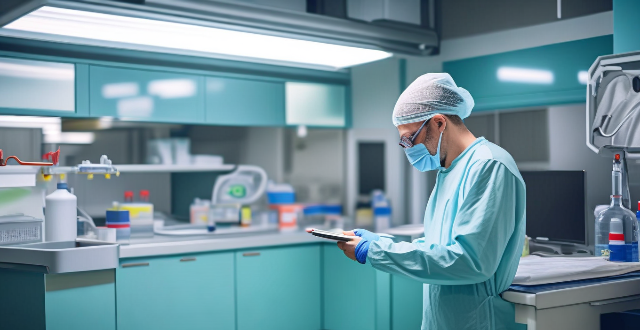
What are the benefits of wearing protective clothing in a laboratory setting ?
In a laboratory setting, wearing protective clothing is crucial for the safety and well-being of individuals working with hazardous materials or conducting experiments that may pose risks. The benefits of wearing protective clothing include protection from chemical spills and splashes, biological hazards, personal comfort and hygiene, and compliance with safety regulations. By prioritizing safety through proper protective clothing, laboratory personnel can work more confidently and efficiently while minimizing potential risks to their health and well-being.

Can COVID-19 be transmitted through airborne particles ?
COVID-19 can be transmitted through airborne particles, including small aerosols that can remain in the air for long periods of time and travel up to 6 feet away from the source of infection. Wearing a mask and practicing good hygiene measures are important ways to prevent the spread of the virus.

What is the importance of wearing seat belts in vehicles ?
Wearing seat belts in vehicles is crucial for reducing the risk of serious injuries or death in crashes. They protect against head, brain, chest, and abdominal injuries by preventing ejection and distributing impact force. This practice is also legally required and can affect insurance payouts. Drivers should set an example for passengers, especially children, to promote safe driving habits. Buckling up is a simple, effective way to protect oneself and others.

How can I ensure safe travel to an island during COVID-19 ?
To ensure safe travel to an island during COVID-19, research the destination's situation, choose a safe mode of transportation, pack essential items, follow safety guidelines, and stay informed about local regulations.
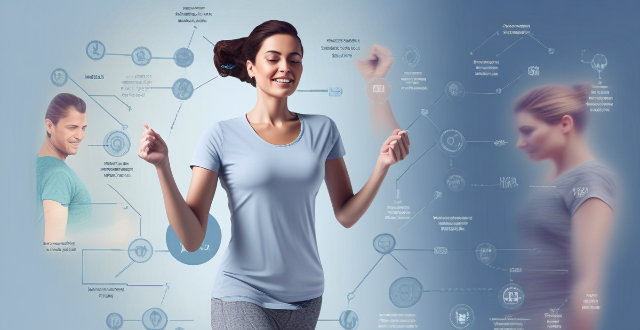
Are there any health risks associated with wearing a fitness tracker ?
The article discusses potential health risks associated with wearing fitness trackers, including radiation exposure, skin irritation and allergies, and distracted driving. It provides tips on how to minimize these risks, such as limiting exposure time, choosing low-power modes, using hypoallergenic materials, adjusting the fit properly, giving skin regular breaks, turning off non-essential features before driving, using Do Not Disturb mode, and putting the phone away while driving.
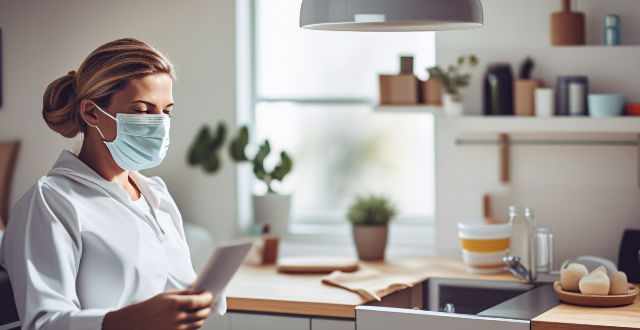
What are some effective ways to practice social distancing in daily life ?
Effective ways to practice social distancing include staying at home as much as possible, keeping a safe distance from others, wearing a mask or face covering in public, washing hands frequently, cleaning and disinfecting high-touch surfaces, and following respiratory etiquette. These practices can help slow the spread of infectious diseases and protect individuals and communities.

Is social distancing a long-term solution for controlling the spread of viruses ?
Social distancing is an effective measure for controlling the spread of viruses in the short term, but its feasibility as a long-term solution depends on various factors such as the nature of the virus, availability of medical resources, and willingness of people to adhere to guidelines. Other measures such as mask-wearing, hand hygiene, contact tracing, regular testing, and vaccine development should also be considered alongside social distancing to effectively control the spread of viruses over time.

How can I maintain a professional appearance while staying comfortable throughout the day ?
Maintaining a professional appearance while staying comfortable throughout the day is crucial in the workplace. Here are some tips: 1. Dress appropriately by choosing well-fitted clothes that are appropriate for your job and industry, avoiding overly casual or revealing clothing, and sticking to neutral colors like black, gray, navy, or beige. Pay attention to grooming by keeping your hair neat and tidy, making sure your facial hair is well-groomed if you choose to wear it, and applying deodorant and keeping your breath fresh with mints or gum. 2. Invest in quality footwear by wearing comfortable shoes that are supportive, such as loafers or low heels, avoiding high heels or shoes that pinch your toes, and breaking in new shoes gradually by wearing them around the house before wearing them to work. Take care of your feet by wearing socks or stockings that wick away moisture and prevent blisters, using shoe inserts or insoles for extra cushioning and support, and giving your feet a break by taking off your shoes during lunch breaks or when you're at your desk. 3. Stay hydrated and nourished by drinking plenty of water and bringing a water bottle to work to refill it throughout the day, avoiding sugary drinks and caffeine which can dehydrate you. Snack smartly by packing healthy snacks like fruits, nuts, or granola bars to avoid midday cravings for unhealthy foods, and eating small meals throughout the day instead of three large ones to maintain energy levels. 4. Take breaks and stretch by getting up from your desk every hour or so and taking a short walk or stretch, using your lunch break to go for a walk outside or do some light exercise. Practice good posture by sitting up straight with your feet flat on the floor and your shoulders relaxed, using a chair with good back support and adjusting the height if necessary, and taking breaks from staring at a computer screen by looking away for a few seconds every 20 minutes.

How can I protect myself from getting infected with COVID-19 ?
The text provides tips on how to protect oneself from getting infected with COVID-19, including washing hands frequently, covering mouth and nose when coughing or sneezing, practicing social distancing, wearing a mask in public, staying home as much as possible, and getting vaccinated if eligible. These precautions can help reduce the risk of infection and protect oneself and others.
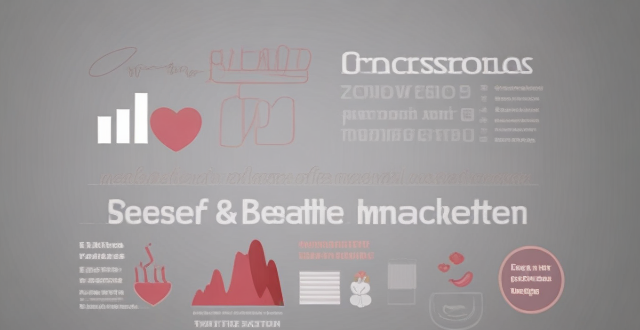
Are there any health benefits to wearing an Apple Watch ?
The Apple Watch offers several health benefits, including heartThe Apple Watch offers several health benefits, including heart recording, fitness tracking, sleep including heart rate monitoring, ECG recording, fitness tracking, sleep analysis, and stress management. However, these features should not replace professional medical advice or treatment.

What are some luxurious lifestyle choices made by celebrities ?
Celebrities are known for their lavish lifestyles and extravagant choices, including owning private islands, driving exotic cars, wearing designer clothing and accessories, and living in mansions and luxury homes. Some famous examples include Richard Branson owning Necker Island, Jay Leno having an extensive collection of over 200 cars, Beyoncé frequently wearing haute couture gowns, and Taylor Swift's mansion featuring a private beach. These luxurious lifestyle choices reflect their wealth, status, and influence.

Are there any alternative methods for preventing infectious diseases besides vaccination ?
Besides vaccination, there are several alternative methods that can help prevent the spread of infectious diseases, including hand hygiene, wearing personal protective equipment (PPE), following respiratory etiquette, and maintaining safe food practices. These measures can reduce the risk of infection and contribute to controlling the spread of infectious diseases.
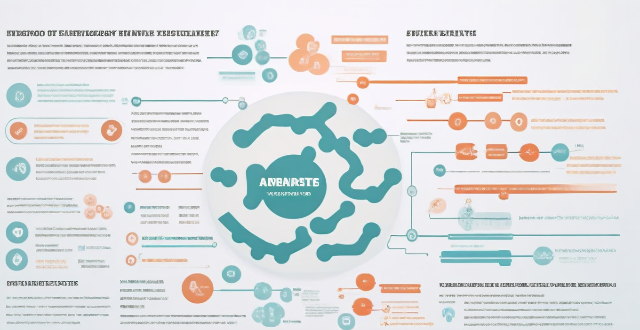
What measures are being taken to control the spread of virus variants ?
The emergence of virus variants is a significant concern globally. Various measures are being implemented to control their spread, including surveillance and genomic sequencing, testing and tracing, border controls and travel restrictions, vaccination efforts, public health measures, research and development, and education and messaging. These strategies aim to mitigate the impact of variants and protect populations from more severe outbreaks. It is crucial for everyone to stay informed and continue following public health guidelines to contribute to these efforts.
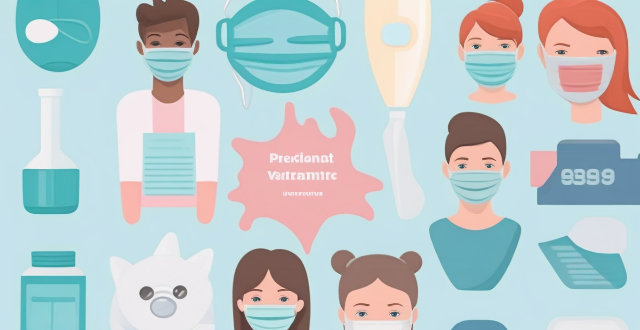
How can we prevent the spread of virus variants ?
To prevent the spread of virus variants, a multifaceted approach is necessary, including vaccination, regular testing and isolation, public health measures such as mask-wearing and physical distancing, travel restrictions and quarantine, research and surveillance, and community action. Staying up-to-date with boosters and improving indoor ventilation can also help maintain protection against new variants.
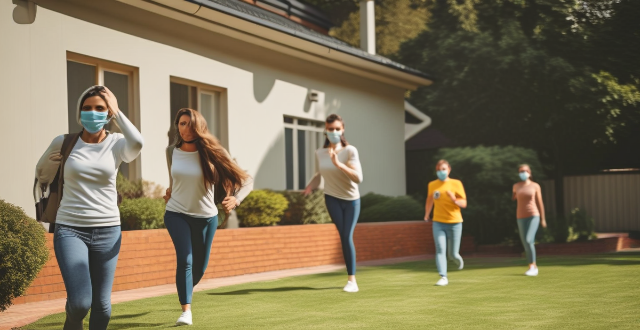
Is it necessary to wear protective gear when applying disinfectants in household settings ?
In conclusion, wearing protective gear when applying disinfectants in household settings is necessary to protect yourself from potential harm. Disinfectants contain chemicals that can be harmful if not used properly, and there are risks associated with their use. Personal Protective Equipment (PPE) such as gloves, goggles, masks, and protective clothing can help minimize these risks. While it may not be necessary to wear full PPE every time you clean your home, there are certain situations where it is recommended. It is always better to err on the side of caution and wear appropriate PPE when using disinfectants to ensure your safety and health.

How effective has the government's pandemic management been so far ?
The effectiveness of the government's pandemic management can be evaluated based on several key factors, including the speed and scope of response, coordination of resources, implementation of public health measures, and communication and transparency with the public. In terms of speed and scope of response, the government's initial response to the pandemic was crucial in determining the overall effectiveness of its management. This includes the timeliness of declaring a state of emergency, implementing travel restrictions, and establishing testing protocols. The allocation of resources such as medical supplies, hospital beds, and personnel was another important factor. The government needed to ensure that these resources were distributed efficiently and equitably across affected areas. As the pandemic progressed, the ability to scale up response efforts, such as increasing testing capacity and contact tracing, was essential for containing the spread of the virus. Effective coordination between different government agencies and departments was vital for a unified and cohesive response. This involved collaboration between health, transportation, education, and other relevant sectors. Partnering with private companies and organizations could help in leveraging their expertise and resources, such as utilizing technology for contact tracing or collaborating with pharmaceutical companies for vaccine development. Working closely with international partners and sharing information and resources could enhance the overall response effort and contribute to global pandemic control. The implementation of public health measures played a significant role in mitigating the spread of the virus. Testing strategies and contact tracing programs were critical for identifying cases and preventing further transmission. The rollout of vaccination programs was essential for achieving herd immunity and reducing the impact of the pandemic. The government needed to ensure equitable access to vaccines and efficient distribution mechanisms. Encouraging public compliance with health guidelines, such as mask-wearing and social distancing, through effective communication campaigns was also crucial for mitigating the spread of the virus. Communication and transparency were key factors in maintaining public trust and awareness during the pandemic. Providing regular updates on the pandemic situation, including case numbers, hospitalization rates, and mortality rates, helped maintain public trust and awareness. Basing decisions on scientific evidence and expert advice demonstrated a commitment to evidence-based policymaking, which is crucial for an effective response. Being transparent about challenges faced during the pandemic, such as supply shortages or delays in vaccine delivery, fostered trust and understanding among the public. In conclusion, evaluating the effectiveness of the government's pandemic management requires a comprehensive assessment of various factors, including the speed and scope of response, coordination of resources, implementation of public health measures, and communication and transparency with the public. By considering these aspects, we can gain a better understanding of how well the government has managed the pandemic so far.

How can I create a sleep-friendly environment in my bedroom ?
To create a sleep-friendly environment in your bedroom, control the lighting, maintain a comfortable temperature, reduce noise levels, invest in a comfortable mattress and pillows, limit electronic devices, and establish a bedtime routine.